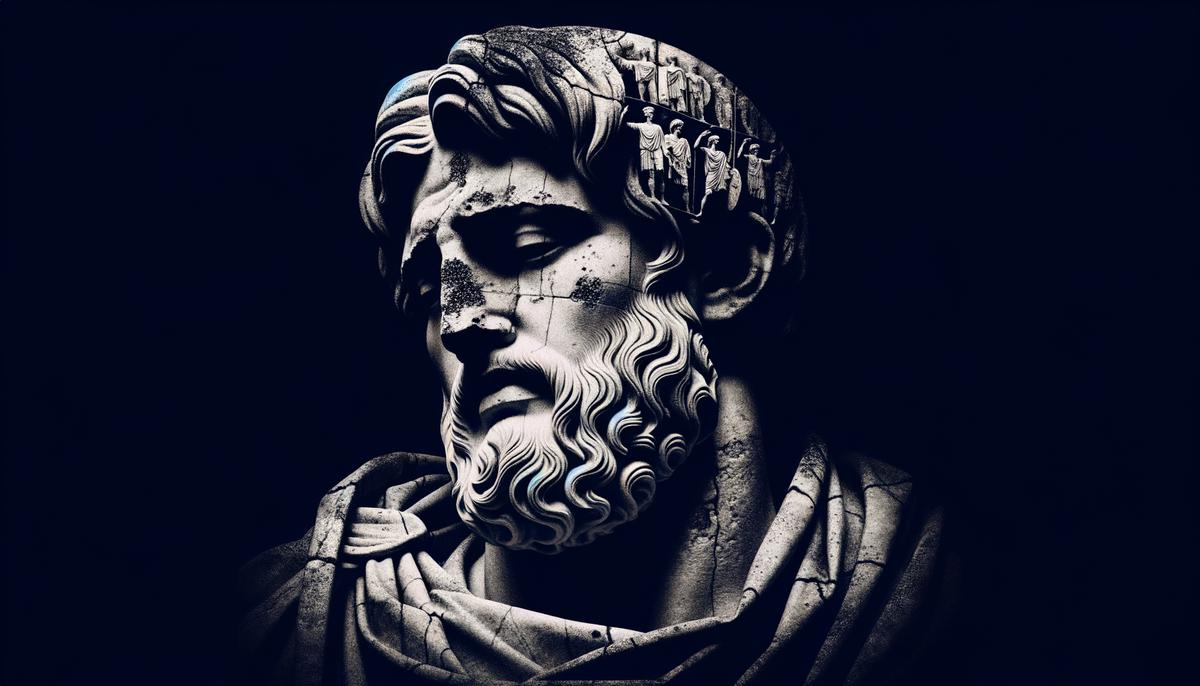Evolution of Greek Sculpture
Greek sculpture during the Archaic period was known for its rigidity and highly stylized forms. Statues from this era, such as the kouroi (male youths) and korai (female figures), stood with a notable stiffness, arms usually at their sides, with one foot slightly forward, mimicking Egyptian statuary which greatly influenced Greek art at this time. Often, these figures bore the 'Archaic smile,' a fixed, enigmatic expression meant to animate the face, despite their otherwise static poses.
As we transition into the Classical period, a remarkable transformation occurs. The adherence to strict frontal alignment loosens, making way for a more naturalistic representation of the human body. This change is largely attributed to advances in bronze casting techniques and a deepened understanding of human anatomy among Greek sculptors. Phidias, one of the most celebrated artists of this era, masterfully captures the human form in statues like the 'Doryphoros' (Spear Bearer), which exemplifies the 'contrapposto' stance – a revolutionary idea showing a relaxed shift in weight with one leg bearing the weight and the other leg at ease. This conveyed a sense of movement and life in the sculpture, in stark contrast to the static figures of the Archaic period.
Philosophical changes also greatly contributed to this evolution. The Classical period strongly reflected humanist values, focusing on idealized proportions based on the Golden Ratio to capture beauty and harmony. This was underpinned by a view of humans as beings of rational thought and emotion, worthy of celebration and admiration.
The Hellenistic era pushed the boundaries even further, introducing dramatic narratives and strong emotional expressions in sculpture. Technological advancements allowed for more ambitious works. The 'Laocoön and His Sons,' for example, are a profound representation of agony and struggle that far exceed the measured calm of Classical works. This piece tells a story, its figures captured mid-action, a stark departure from previous norms.
One can't discuss the Hellenistic period without mentioning its societal influences. The expansion of the Greek world, under leaders like Alexander the Great, brought about a merging of cultures that broadened the horizon for sculptors both thematically and stylistically1. It was an era marked by individualism, dramatic expressions, and a move towards realism over idealism. Sculptures from this time display an incredible range of emotions and psychological depth, often portraying everyday people instead of deities and heroes.
Sculptural techniques seen in Hellenistic works, such as deep cuts for more defined shadows, emphasize this dramatic storytelling. Materials also varied widely, with sculptors often painting their creations or using colored materials to achieve a more lifelike effect – a practice hinted at during earlier periods but fully embraced in Hellenistic times.
Techniques evolving over these periods were not merely a matter of artistic progression; they reflect changes in societal values, cross-cultural influences, and advances in technology. Greek sculpture's journey from stiff forms to expressive, dynamic pieces mirrors the complexities and shifts within Greek society itself. Through these masterpieces, viewers from ancient times to the present are invited into the narrative and emotional life of the Greeks across eras, evoking a profound connection through time with these depictions of human beauty, struggle, and triumph.
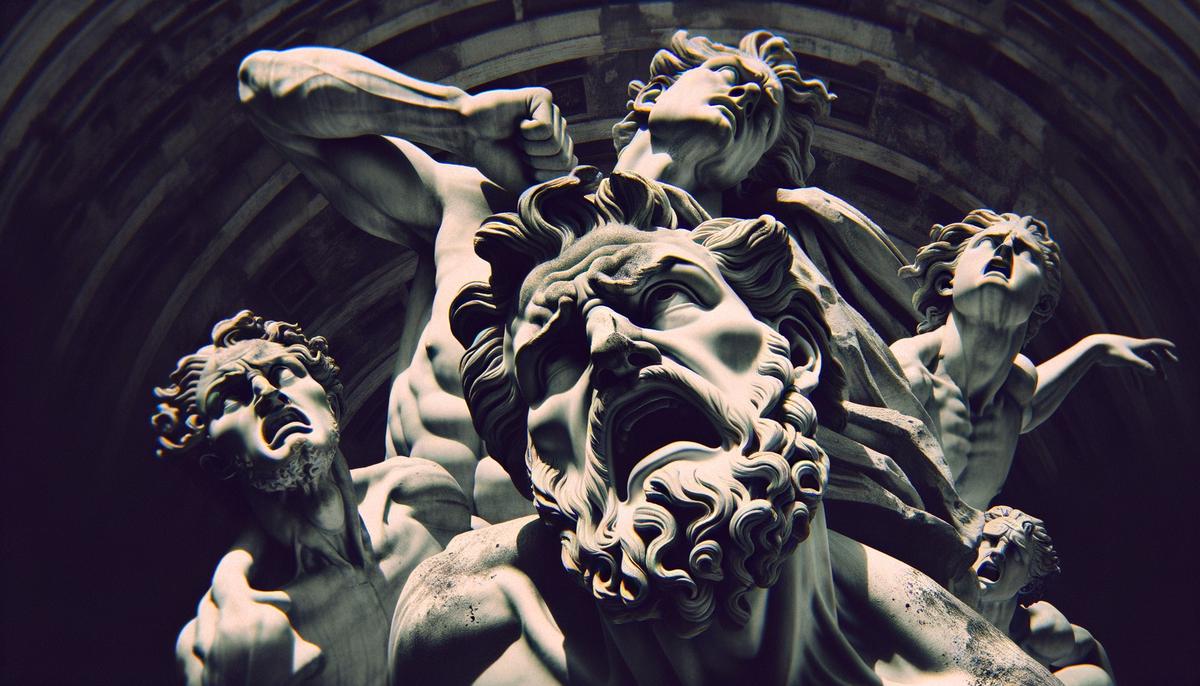
Sculptural Techniques
The nuanced beauty, dynamic forms, and emotive expressions of ancient Greek sculpture were achieved through a sophisticated mastery of materials and techniques. Greek sculptors were not merely artisans but visionaries who harnessed the raw potential of various materials—including bronze, marble, wood, gold, and ivory—to breathe life into their creations. In their hands, these materials transcended their earthly origins, capturing the essence of life and the divine.
Bronze, with its ductile strength and luminous finish, was favored for its ability to realize the intricate details of human anatomy. Ancient texts suggest that Greek artists often began with a carefully prepared clay model before embarking on the final bronze sculpture through the lost-wax casting process. This complex technique involved:
- Creating a wax model of the sculpture
- Encasing it in clay and firing it, causing the wax to melt away, leaving a hollow mold
- Pouring molten bronze into the mold
- Once cooled, releasing the near-complete bronze figure from its clay shroud
- Using tools like chisels and files to meticulously chase the surface, enhancing anatomical precision and emotive qualities, imbuing each piece with vitality
Examples such as the 'Riace Warriors' display such mastery over bronze, their detailed musculature and naturalistic poses capturing the human form in mid-motion with startling realism.
Marble offered a different set of opportunities and challenges. It was revered for its pristine beauty and enduring quality, allowing sculptors to chisel into its depth to reveal the soft curves and fluid lines of draped clothing or the delicate features of a face. The 'Venus de Milo' exemplifies this with her enigmatic expression and robe that clings to her body in a way that remarkably mimics the weight and texture of fabric. To achieve such effects, Greek sculptors used an array of tools from pointed drills for roughing out the larger masses to fine gravers and abrasives for detailing facial expressions or the intricacies of hair. Beyond mere chiseling, the practice of painting marble sculptures was integral in enhancing realism. Traces of pigment discovered on numerous marble statues substantiate ancient accounts of vibrantly painted sculptures, which not only accentuated anatomical details and attire but also endowed the figures with lifelike skin tones, hair colors, and other individual features2.
Though less survived from antiquity, wooden sculptures—often cloaked in gold or ivory—culminated in the revered chryselephantine statues; these combined techniques displayed a sophisticated understanding of mixed media. Descriptions of the statue of Zeus at Olympia, a masterpiece by Phidias, reveal a wooden core covered with plates of ivory to simulate flesh and draped with garments made of gold. Such staggering creations epitomize the heights of idealism achieved by the Greeks, manifesting deities in forms that inspired awe and reverence.
Scattered references to the use of gold leaf and ivory inlay suggest these precious materials were also used to signify divine or royal status, further exemplifying how material choice and sculptural technique were deeply interconnected with thematic significance in Greek art.
Throughout their creation process, Greek artists displayed an intimate knowledge of human anatomy, often observed from life or deduced from observing athletes in action. This insistence on empirical observation and anatomical precision laid the foundation for portraying not just the ideal human form but capturing subtleties of emotion and psyche.
In essence, Greek sculpture was a symphony of materiality and technique combined with an acute observer's eye for realism and a storyteller's vision for idealism. These artists' legacies lie not only in the awe-inspiring deities and heroes that populated their pantheon but also in their relentless pursuit of perfection, employing every tool at their disposal to echo both the physical and the divine.
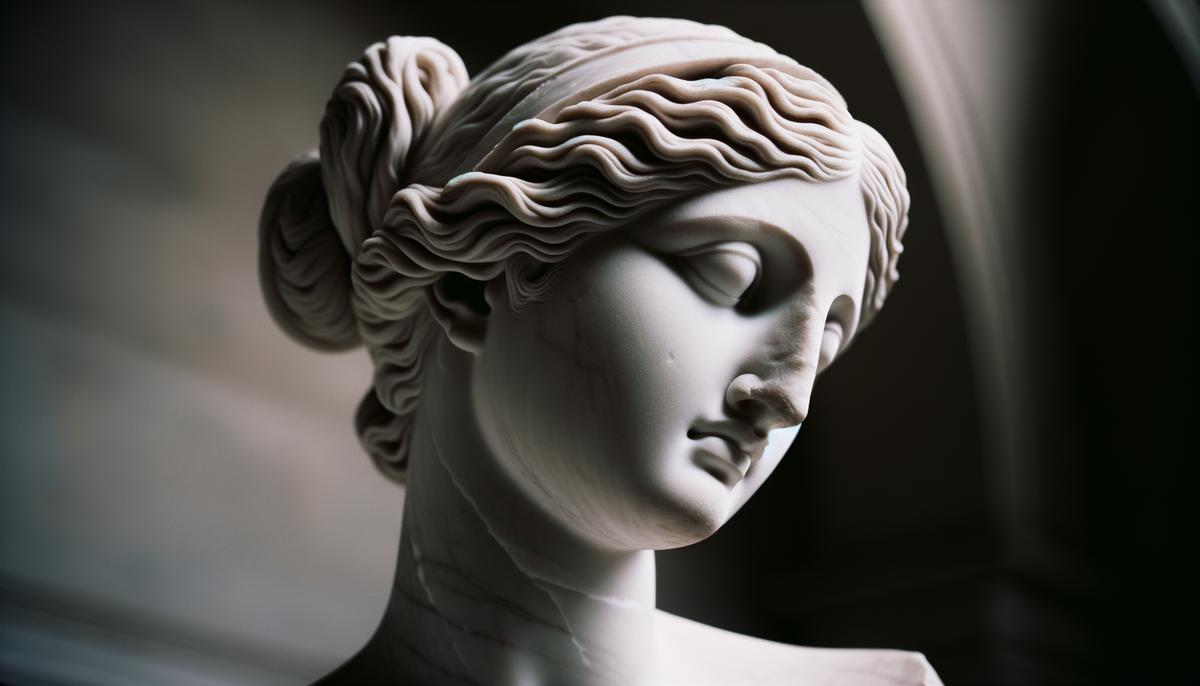
Iconography in Greek Sculpture
Greek sculpture serves as a medium through which the rich tapestry of Greek mythology, religious beliefs, societal aspirations, and human emotions are vividly woven. These masterpieces are laden with themes and symbols that are quintessential to understanding not just the Greek psyche but also the principles that governed their lives. The depictions of gods, goddesses, heroes, athletes, and mythological narratives celebrated divinity and human excellence while also symbolizing virtues, moral lessons, and cosmic order cherished by the Greeks.
Foremost among the themes adorning Greek sculptural art is the pantheon of Olympian gods and goddesses. Each deity embodied specific attributes and presided over certain aspects of nature and human endeavor, making their representations rich in symbolic significance:
- Zeus, with his thunderbolt, symbolized power and justice
- Athena, often depicted with her owl and shield, represented wisdom and strategic warfare
- Aphrodite, shown with the sensuous curves of idealized beauty, embodied love and desire
The portrayal of these deities extended beyond mere representation—they personified the Greeks' aspirations towards moral and intellectual ideals.
In tandem with divine representations, Greek sculpture glorified heroes such as Hercules, Theseus, and Achilles. Their superhuman feats in sculptures did not merely recount tales of valor but symbolized the triumph of order over chaos, of civilization over barbarism. Symbols such as Hercules' lion skin or Theseus' sword encapsulated their virtues of strength, courage, and intelligence. Thus, heroes in Greek sculpture served as exemplars of ethical conduct and the pursuit of excellence or arête.
The celebration of the human form, particularly through the depiction of athletes, was another pivotal theme. Victorious athletes were commemorated in bronze and marble, capturing their youth's ephemeral beauty and physical prowess. These sculptures, while celebratory, were also symbolic of life's fleeting nature and the cultural value of agon, or competitive spirit. Idealized youthful bodies echoed the Greek admiration for health, discipline, and physical perfection—qualities integral to the Greek concept of beauty and virtue.
Mythological scenes carved into reliefs or immortalized in the round served not just as storytelling devices but as allegories embodying moral, philosophical, or even political messages. The labors of Hercules might illustrate the virtues of perseverance and heroism, while scenes like Laocoön and His Sons, enveloped by sea serpents, underscored themes of divine wrath and human suffering. Through the symbolisms within these narratives—whether the cunning intellect personified by Odysseus or the tragic hubris of Niobe—Greek sculptors explored the gamut of human experiences and existential dilemmas.
The themes and symbols prevalent in Greek sculpture also reflect the broader societal values within both public and private spheres. In public spaces like temples and agoras, sculptural motifs catered to civic pride, collective memory, and communal worship—embodied in grand narratives depicted on friezes or in honorific statues of deities and esteemed citizens. Conversely, private sculptures often favored motifs of domesticity, love, and everyday life, thus intertwining personal aspiration with broader cultural ethos.
Greek sculpture was a visual lexicon of thematic profundity and rich symbolism. Each work, a narrative microcosm, encapsulated the Greeks' enduring quest for understanding the divine, the natural, and the human condition. Through their sculptures, ancient Greeks not only celebrated their gods and heroes but also elucidated key philosophical questions about order, beauty, morality, and the human psyche—themes that continue to resonate through time.
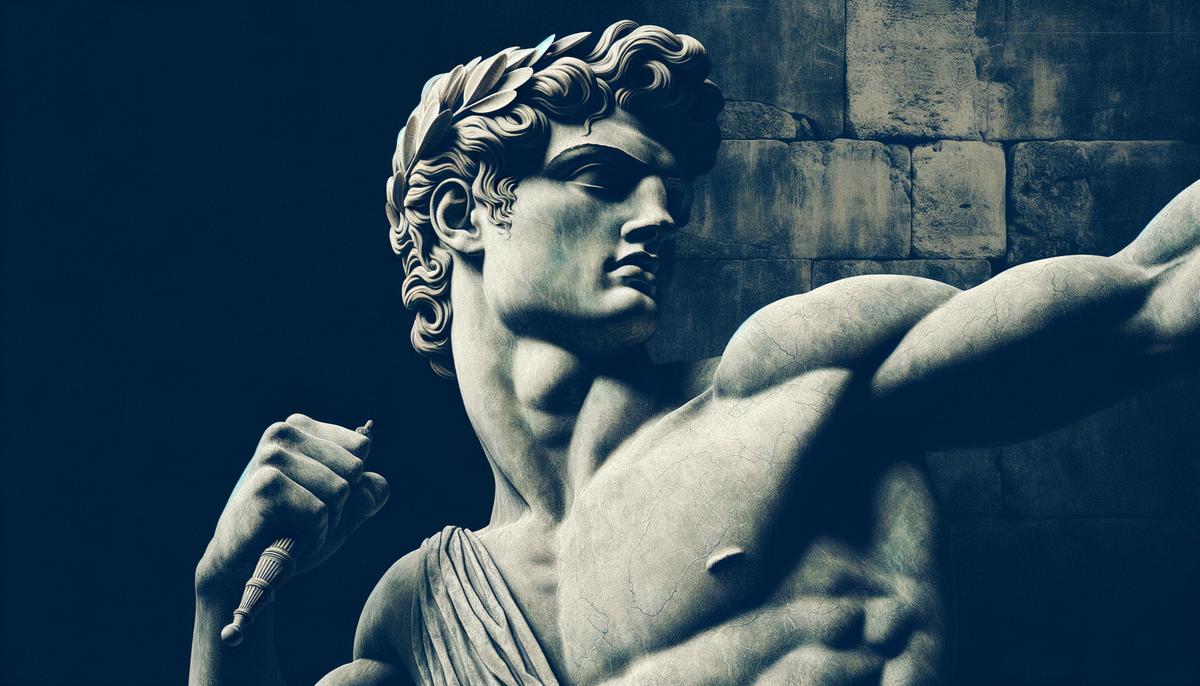
Polychromy in Greek Sculpture
The revelation of color's integral role in ancient Greek sculpture marks a pivotal shift in our understanding of classical aesthetics, challenging the long-standing misconception that these marble and bronze figures were starkly monochromatic. For centuries, the remnants of Greek antiquity were perceived through the lens of their surviving state; their once vibrant hues faded by time, leading observers to laud the purity and simplicity of white marble. This reverence for monochromy, however, represented a significant departure from the intentions of the ancient artists, whose works were originally adorned with a spectrum of colors.
Modern research and technological advancements, particularly in spectrometry and ultraviolet light examination, have played instrumental roles in uncovering the polychromatic practices of ancient sculptors. Analysis of microscopic pigment remnants on sculptures has revealed that these statues were once awash with color and detail. The Greeks applied meticulously mixed pigments to create:
- Realistic skin tones
- Intricate patterns on garments
- Enhanced details such as eyes, lips, and hair
The coloration methods employed by ancient Greeks reflect their pursuit of mimēsis—the faithful replication of nature. Examples include the gleaming blues and reds detected on the famed Alexander Sarcophagus, which depict the battle heroics and splendor of armies with remarkable realism.1 Through reconstructed models, artists and historians like Vinzenz Brinkmann have demonstrated the original polychromy of these works—revealing a world of ancient color long believed to be lost.
The ancient Greek use of color extended beyond mere ornamentation; it was laden with symbolic weight and philosophical significance. Different hues communicated diverse messages about the divine, the natural elements, and socio-political standing. For example:
- Blue might epitomize the vastness of the sky or the sea, realm of gods like Poseidon, suggesting omnipotence and depth.
- Red, often used for garments or accessories in sculpture, could denote nobility, valor, or the life force itself.
Color in Greek sculpture served as a language—a medium through which deeper layers of meaning and mythology could be conveyed.
This reevaluation of ancient Greek sculpture's chromatic vibrancy forces a reconsideration not only of classical aesthetics but also of Western art history's foundational narratives. The idealization of white marble influenced artistic movements for centuries, most prominently during the Renaissance, when sculptors such as Michelangelo sought to emulate the perceived purity of antiquity. This perception enshrined white marble as a symbol of refined beauty and spiritual elevation, inadvertently sidelining the authentic, colorful practices of antiquity.
Acknowledging the polychromatic nature of these artifacts also challenges modern conceptions of race and ethnicity representation within historical contexts. The notion of white statues has been misleadingly appropriated in contemporary discourse to favor particular narratives of identity and purity, disregarding the diverse reality of ancient Greek society and the universal humanism its art embodied.
Uncovering the original vibrancy of ancient Greek sculpture illuminates the technical prowess and aesthetic inclinations of classical artists and enriches the narrative tapestry of the era. It portrays a culture wherein art encapsulated the full spectrum of human experience—emotions, ideals, beliefs—rendered in astonishing hues that resonated with viewers through ages. The unveiling of this polychromatic past represents a significant turn in our appreciation of ancient art; it fosters a more nuanced understanding that transcends simplistic dichotomies of color versus form, inviting us to behold these works as the ancients did: vibrant, meaningful, and thoroughly alive.
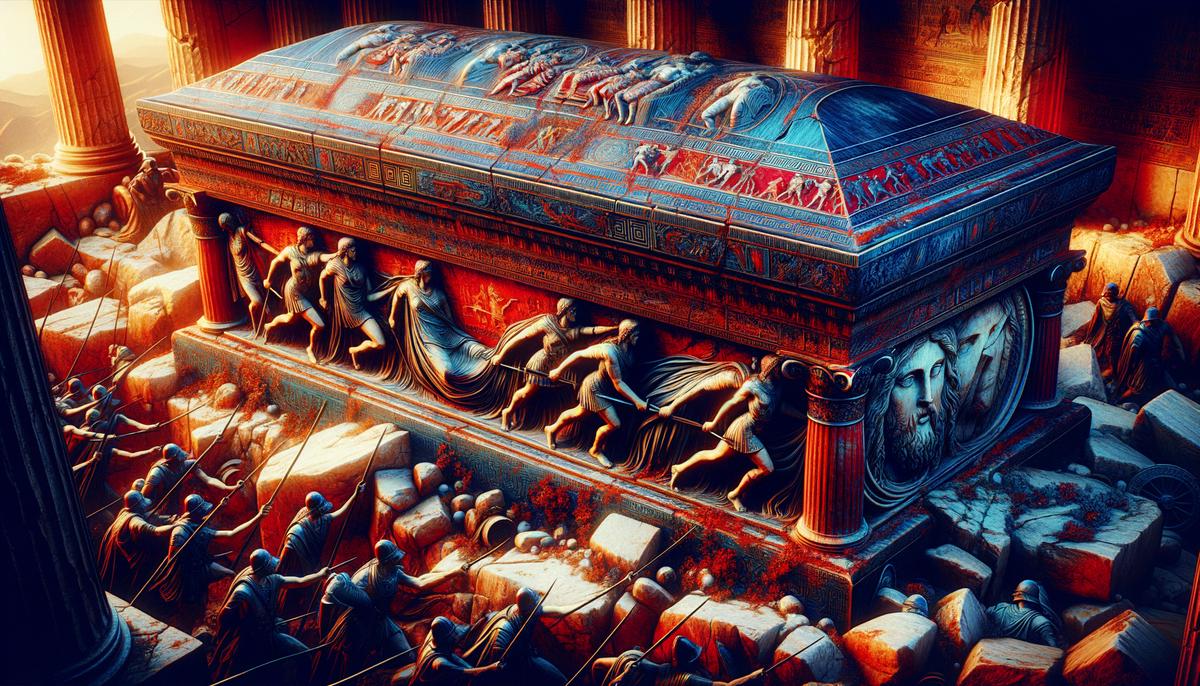
Influence of Greek Sculpture on Western Art
The Enduring Legacy of Greek Sculpture in Western Art
Ancient Greek sculpture's influence permeates the foundation of Western art, casting a long shadow that stretches from the Renaissance to the dynamic expressions of modern art. This profound impact is a testament to the Greek ideals of beauty, proportion, and humanism—principles that have not only survived the passage of time but have flourished, inspiring generations of artists to revisit and reinterpret these classical themes through varied cultural lenses.
The Renaissance served as a pivotal watershed in the rediscovery and revival of classical antiquity, with artists seeking to recapture the splendor of ancient Greek and Roman art. This period marked a reawakening to the ideals of naturalism, balanced proportions, and a deep study of the human form—a shift ushered in by the unearthed relics of antiquity that mesmerized the artistic spheres of Europe. Sculptors such as Donatello and Michelangelo were profoundly influenced by the forms and philosophies of Greek sculpture, as evidenced in works like Donatello's "David" and Michelangelo's "David" and "Pieta." These pieces mirrored the ancient Greeks' quest for idealized human forms and embraced a humanistic spirit that celebrated the beauty and potential of the individual.
The neoclassical movement of the 18th and early 19th centuries represented another significant revival of Greek artistic principles, emerging as a response to the perceived excesses of Baroque and Rococo styles. Artists like Antonio Canova and Jean-Auguste-Dominique Ingres turned to the purity, simplicity, and serenity of classical art, embodying its ethos in sculptures and paintings that emphasized clarity of line and form, restrained emotional expression, and adherence to the norms of classical antiquity. Canova's "Perseus with the Head of Medusa" and "The Three Graces" exemplify this return to classical refinement, recalling the harmonious proportions and poised elegance of Greek originals, albeit infused with a neoclassical sensibility.
In the sweeping transformation of art through modern movements, the ethos of ancient Greek sculpture remained a beacon for exploration and dialogue. The abstraction seen in the works of artists like Constantin Brâncuși directly engages with the elemental forms and spiritual essence distilled in ancient sculpture. Similarly, Alberto Giacometti's elongated figures resonate with the ethereal, almost otherworldly quality of certain Greek sculptures, bridging millennia through the shared pursuit of capturing the human condition.
The incorporation of classical themes and motifs can also be seen in Pablo Picasso's oeuvre, particularly in his "classical period" following World War I, where his figures exhibit a solidity and monumentality reminiscent of Greek ideals. This interplay between past and present reflects not only an admiration for classical forms but also suggests a continuous conversation between the artist and history—reinterpreting age-old themes through contemporary perspectives.
Beyond mere replication or homage, the enduring legacy of Greek sculpture in Western art stems from its ability to evoke a timeless dialogue—challenging artists to probe the essence of beauty, proportion, and the human spirit. The Greek pursuit of harmony between form and function, the material and the ethereal, laid a foundational ethos that continues to inspire, challenge, and shape the contours of art across eras. In this continuum, ancient Greek sculpture endures not as a relic of the past but as a living tradition—its principles reverberating through the veins of Western art with undiminished vitality and relevance.
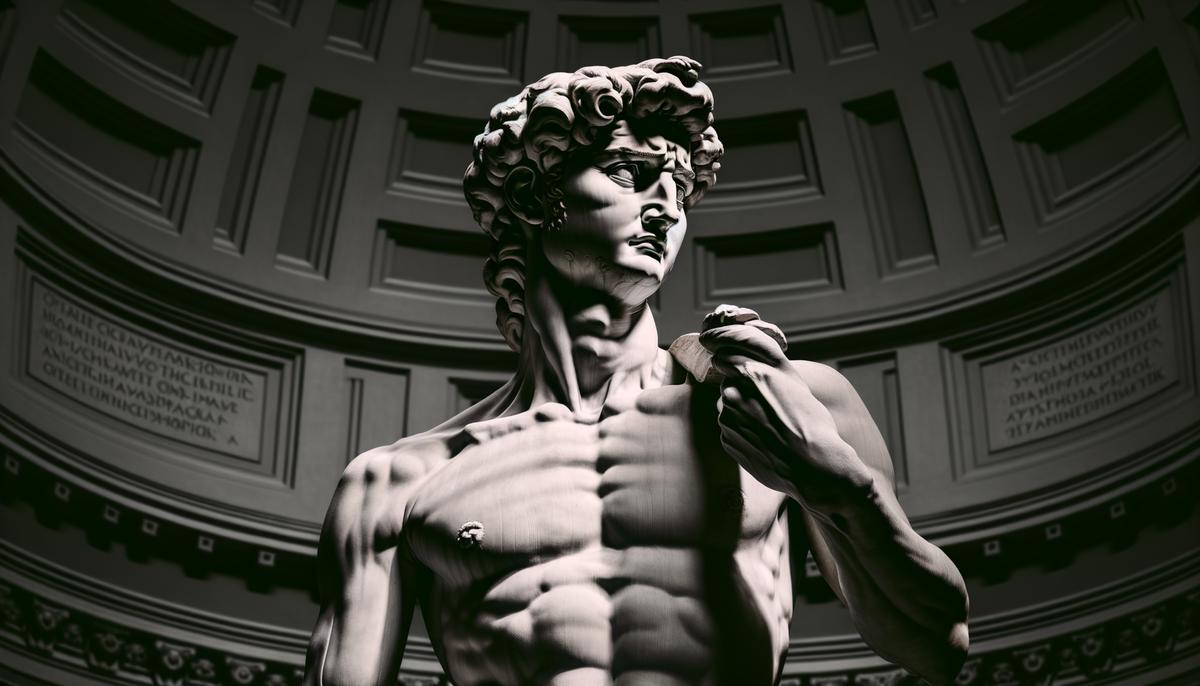
The legacy of Greek sculpture transcends artistic achievement; it embodies a profound exploration of human beauty, struggle, and triumph. This narrative not only charts the technical and stylistic evolution of sculpture but also highlights its capacity to evoke a deep emotional resonance across time. By examining these masterpieces, we gain insight into the ancient Greeks' quest to capture both the physical and the divine, a pursuit that continues to inspire and shape the contours of art today.
